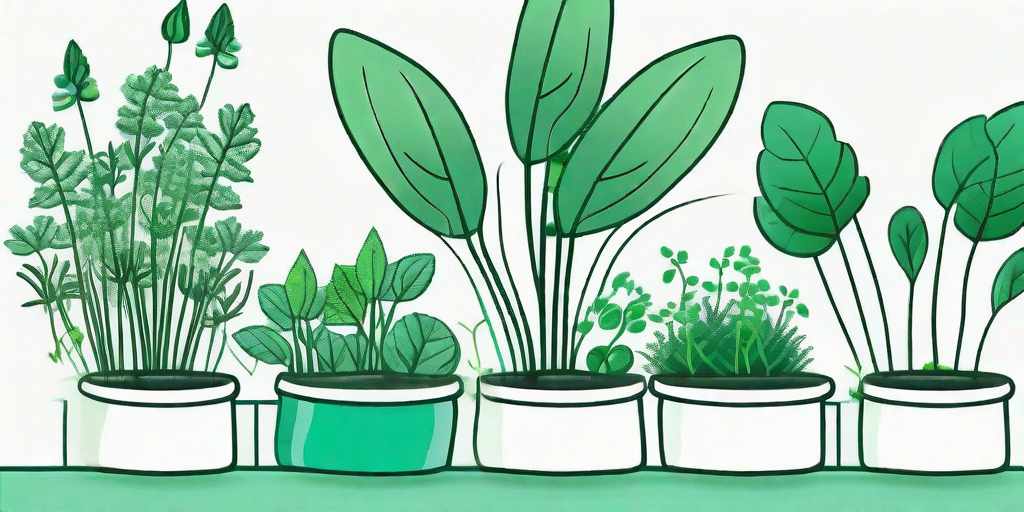
If you've ever looked at your bland, herb-less meals and thought, "I could really use a sprinkle of fresh basil on this," then you're in the right place. Or perhaps you're just tired of your friends bragging about their lush herb gardens while you're stuck with a wilting parsley plant. Fear not, dear reader, for this guide will turn you into a bona fide herb-growing guru. Let's dive into the verdant world of herb cultivation, shall we?
Understanding Your Herbs
Before you start throwing seeds around willy-nilly, it's important to understand that not all herbs are created equal. Some are like those high-maintenance friends who need constant attention, while others are more like the chill buddy who's happy with a weekly catch-up. Knowing what each herb needs is the first step to a thriving herb garden.
Let's take basil, for example. This Mediterranean native loves the sun and needs well-drained soil. On the other hand, parsley prefers cooler temperatures and moist soil. So, if you're planning to grow these two together, you might want to rethink your strategy. It's like trying to make a cat and a dog share the same bed - it's not going to end well.
Common Herbs and Their Needs
Here's a quick rundown of some common herbs and their specific needs:
- Basil: Loves sun, needs well-drained soil.
- Parsley: Prefers cooler temperatures, likes moist soil.
- Rosemary: Enjoys full sun, requires well-drained soil.
- Mint: Can handle partial shade, likes moist soil.
- Thyme: Loves sun, needs well-drained soil.
Starting from Seeds
Now that you've got a basic understanding of your herbs, it's time to get your hands dirty. Starting herbs from seeds can be a bit tricky, but with a little patience and a lot of love, you'll be rewarded with a bountiful harvest.
First things first, you'll need to get your seeds. You can find these at your local garden center, or if you're feeling adventurous, online. Just make sure you're buying from a reputable source. We don't want any dud seeds ruining your herb-growing dreams, do we?
Germinating Your Seeds
Once you've got your seeds, it's time to germinate them. This is essentially the process of waking the seed up from its slumber. There are a few ways to do this, but the easiest is to simply sow them in a seed tray filled with a good quality seed compost. Make sure to follow the sowing instructions on the seed packet - some seeds need to be sown on the surface, while others need to be buried.
After sowing, water the seeds gently and place the tray in a warm, well-lit spot. A windowsill is usually a good choice. Then, it's just a matter of waiting for the magic to happen. This can take anywhere from a few days to a couple of weeks, depending on the herb. So, patience is key here.
Transplanting and Caring for Your Herbs
Once your seeds have sprouted, it's time to transplant them into their permanent homes. This could be a pot, a planter, or directly into your garden. Just make sure the location fits the needs of the herb - remember our discussion about basil and parsley?
When transplanting, handle the seedlings gently to avoid damaging the roots. Dig a hole in the soil, place the seedling in, and cover the roots with soil. Give it a good watering, and voila, you've successfully transplanted your herb!
Watering and Feeding
Now, it's all about maintenance. Watering and feeding your herbs is crucial for their growth. But remember, each herb has its own needs. Some like their soil to dry out between waterings, while others prefer consistently moist soil. As for feeding, a general-purpose liquid fertilizer should do the trick. Just follow the instructions on the bottle.
And there you have it, folks! With a bit of knowledge, patience, and care, you'll be well on your way to growing a thriving herb garden from seeds. So, get out there and start sowing!
Frequently Asked Questions
When is the best time to start seeds?
The best time to start seeds depends on the herb. Some herbs, like basil and parsley, can be started indoors 6-8 weeks before the last spring frost. Others, like rosemary and thyme, are best started in the spring or fall.
How often should I water my herbs?
This depends on the herb. Some herbs, like basil and rosemary, prefer their soil to dry out between waterings. Others, like parsley and mint, prefer consistently moist soil. When in doubt, check the soil with your finger. If it feels dry, it's time to water.
Can I grow herbs indoors?
Absolutely! Many herbs do well indoors, as long as they get enough light. A sunny windowsill is usually a good spot. Just make sure to keep an eye on the moisture levels in the soil, as indoor air can be quite dry.











